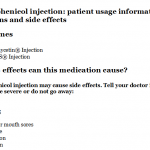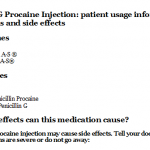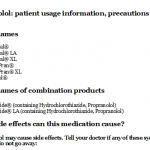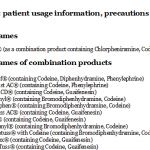
Twinrix: Hepatitis A & Hepatitis B (Recombinant) Vaccine: patient information, prescribing information, ingredients, manufacturer, adverse reactions and side effects
Saturday, April 08, 2017 by Gregory Van Dyke
http://www.naturalnewsreference.com/2017-04-08-twinrix-hepatitis-a-hepatitis-b-recombinant-vaccine-patient-information-prescribing-information-ingredients-manufacturer-adverse-reactions-and-side-effects.html
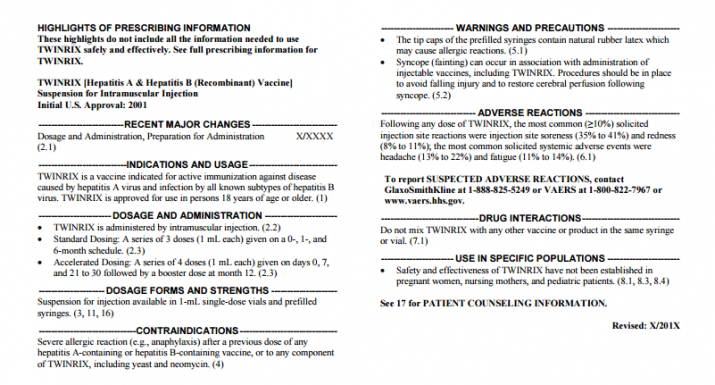
HIGHLIGHTS OF PRESCRIBING INFORMATION
These highlights do not include all the information needed to use TWINRIX safely and effectively. See full prescribing information for TWINRIX.
See full insert sheet at this link at the Natural News Reference website.
TWINRIX [Hepatitis A & Hepatitis B (Recombinant) Vaccine]
Suspension for Intramuscular Injection
Initial U.S. Approval: 2001
INGREDIENTS AND EXCIPIENTS
TWINRIX [Hepatitis A & Hepatitis B (Recombinant) Vaccine] is a bivalent vaccine containing the antigenic components used in producing HAVRIX® (Hepatitis A Vaccine) andENGERIX-B® [Hepatitis B Vaccine (Recombinant)]. TWINRIX is a sterile suspension for intramuscular administration that contains inactivated hepatitis A virus (strain HM175) and noninfectious hepatitis B virus surface antigen (HBsAg). The hepatitis A virus is propagated in MRC-5 human diploid cells and inactivated with formalin. The purified HBsAg is obtained by culturing genetically engineered Saccharomyces cerevisiae yeast cells, which carry the surface antigen gene of the hepatitis B virus. Bulk preparations of each antigen are adsorbed separately onto aluminum salts and then pooled during formulation.
A 1-mL dose of vaccine contains 720 ELISA Units of inactivated hepatitis A virus and 20 mcg of recombinant HBsAg protein. One dose of vaccine also contains 0.45 mg of aluminum in the form of aluminum phosphate and aluminum hydroxide as adjuvants, amino acids, sodium chloride, phosphate buffer, polysorbate 20, and Water for Injection. From the manufacturing process each 1-mL dose of TWINRIX also contains residual formalin (not more than 0.1 mg), MRC-5 cellular proteins (not more than 2.5 mcg), neomycin sulfate (an aminoglycoside antibiotic included in the cell growth media; not more than 20 ng), and yeast protein (no more than 5%).
TWINRIX is available in vials and prefilled syringes. The tip caps of the prefilled syringes contain natural rubber latex; the plungers are not made with natural rubber latex. The vial stoppers are not made with natural rubber latex.
TWINRIX is formulated without preservatives.
INDICATIONS AND USAGE
TWINRIX is a vaccine indicated for active immunization against disease caused by hepatitis A virus and infection by all known subtypes of hepatitis B virus. TWINRIX is approved for use in persons 18 years of age or older. (1)
DOSAGE AND ADMINISTRATION
TWINRIX is administered by intramuscular injection. (2.2)
Standard Dosing: A series of 3 doses (1 mL each) given on a 0-, 1-, and 6-month schedule. (2.3)
Accelerated Dosing: A series of 4 doses (1 mL each) given on days 0, 7, and 21 to 30 followed by a booster dose at month 12. (2.3)
DOSAGE FORMS AND STRENGTHS
Suspension for injection available in 1-mL single-dose vials and prefilled syringes. (3, 11, 16)
CONTRAINDICATIONS
Severe allergic reaction (e.g., anaphylaxis) after a previous dose of any hepatitis A-containing or hepatitis B-containing vaccine, or to any component of TWINRIX, including yeast and neomycin. (4)
WARNINGS AND PRECAUTIONS
The tip caps of the prefilled syringes contain natural rubber latex which may cause allergic reactions. (5.1)
Syncope (fainting) can occur in association with administration of injectable vaccines, including TWINRIX. Procedures should be in place to avoid falling injury and to restore cerebral perfusion following syncope. (5.2)
ADVERSE REACTIONS
Following any dose of TWINRIX, the most common (≥10%) solicited injection site reactions were injection site soreness (35% to 41%) and redness (8% to 11%); the most common solicited systemic adverse events were headache (13% to 22%) and fatigue (11% to 14%). (6.1)
To report SUSPECTED ADVERSE REACTIONS, contact GlaxoSmithKline at 1-888-825-5249 or VAERS at 1-800-822-7967 or www.vaers.hhs.gov.
DRUG INTERACTIONS
Do not mix TWINRIX with any other vaccine or product in the same syringe or vial. (7.1)
USE IN SPECIFIC POPULATIONS
Pregnancy
Pregnancy Category C: Animal reproduction studies have not been conducted with TWINRIX. It is also not known whether TWINRIX can cause fetal harm when administered to a pregnant woman or can affect reproduction capacity. TWINRIX should be given to a pregnant woman only if clearly needed.
Nursing Mothers
It is not known whether TWINRIX is excreted in human milk. Because many drugs are excreted in human milk, caution should be exercised when TWINRIX is administered to a nursing woman.
Pediatric Use
Safety and effectiveness in pediatric patients younger than 18 years have not been established.
Geriatric Use
Clinical studies of TWINRIX did not include sufficient numbers of subjects aged 65 years and older to determine whether they respond differently from younger subjects [see Clinical Studies (14.1, 14.3)].
Safety and effectiveness of TWINRIX have not been established in pregnant women, nursing mothers, and pediatric patients.
Revised: X/201X
https://www.fda.gov/downloads/BiologicsBloodVaccines/Vaccines/ApprovedProducts/UCM110079.pdf
Tagged Under: Tags: dosage, ingredients, insert sheet, side effects, twinrix, usage, warnings

